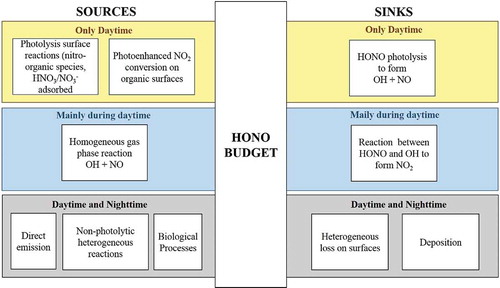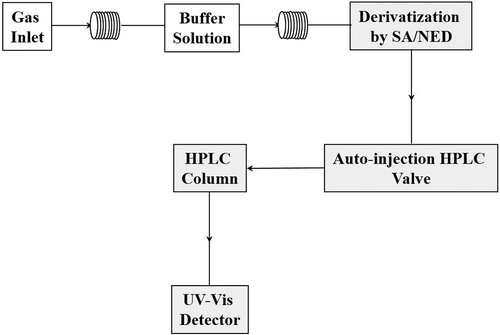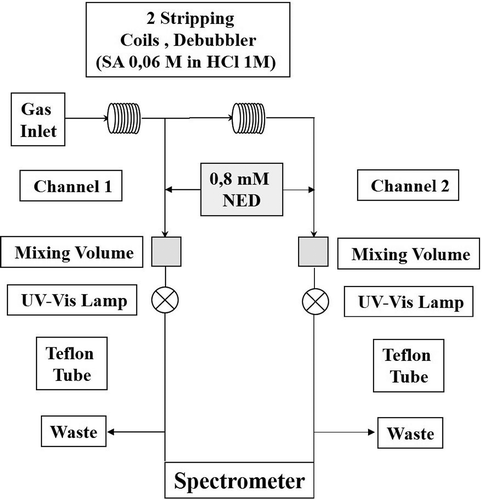Figures & data
Figure 1. A schematic sketch over the chemical processes acting as sources and sink for nitrous acid (HONO) in the lower atmosphere. The processes occurring only in presence of solar radiation are reported in the yellow section, whereas the processes producing and removing HONO mainly during daytime are showed in the blue section. Finally, the gray section includes the sources and sinks of HONO operating similarly both during daytime and nighttime.

Table 1. Main reaction mechanisms proposed for the heterogeneous NO2 hydrolysis
Table 2. NO2 uptake coefficients (γNO2) of different organic surfaces under UV irradiation
Figure 2. Schematic sketch of the major components related to the differential optical absorption spectroscopy (DOAS) system.

Figure 3. Schematic sketch of the semiautomatic HONO instrument based on reverse-phase HPLC analysis, followed by UV absorption detection.


